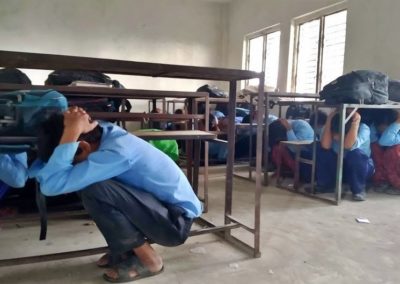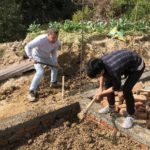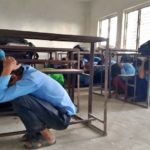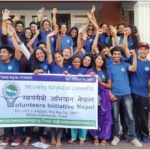Nepal is highly prone to various forms of natural and human induced disasters. It lies in a seismically active zone with a high probability for massive earthquake. Every year thousands of people lose their lives due to landslide and flood. Unmanaged urbanization and unplanned construction has increased the occurrences of natural disasters.
However, the need to disaster preparedness education is often overlooked by individuals as well as the Government. People are not familiar with safety measure to take at times of disasters. The education curriculum has not been able to highlight the importance of disaster preparedness. As a result, a number of people who could have been saved end up losing their lives merely due to lack of awareness.
Project Goal
VIN aims to raise awareness among the public on what to do/ what not do in the events of a natural disaster. By 2030, we hope 60% of targeted communities have knowledge and skill on Disaster Risk Management.
SDG 11: Make cities and human settlements inclusive, safe, resilient and sustainable
It is important to substantially increase the number of human settlements adopting and implementing integrated policies and plans towards disaster resilience. A holistic approach to disaster management should be put into effect.
Project Description
VIN has been conducting numerous DRR education programs in vulnerable areas of Nepal. The community people are trained to be self-resilient and develop approaches as disaster response. For instance, VIN gives practical and applicable advice or drills to people on how to pack an emergency bag, how to organize large furniture in your house, where to take shelter at times of disaster etc. Workshops on risks associated with disasters are conducted focusing school-going children as well as community people. Emergency disaster management trainings are also provided to youths of at-risk communities. This eventually creates an aware and self-dependant taskforce at times of disasters.
Gallery
Research/Reports
To know more about the status of Disaster Risk Reduction Education in Nepal, please visit the reports below:
DRR in Education: Lessons learned assessment following the Nepal floods in August, 2017 – By Save the Children Norway
Mainstreaming disaster risk reduction in Nepal’s education system – Shyam Sundar




